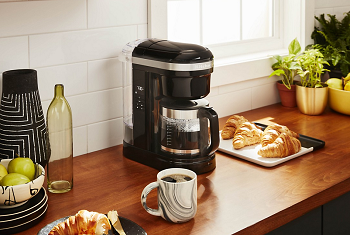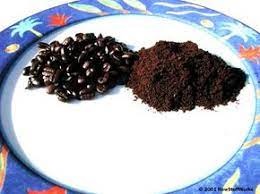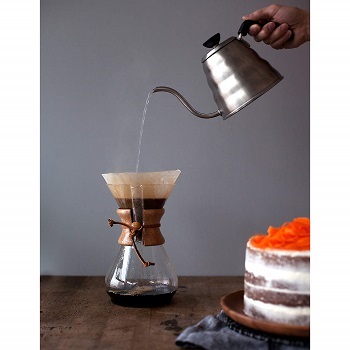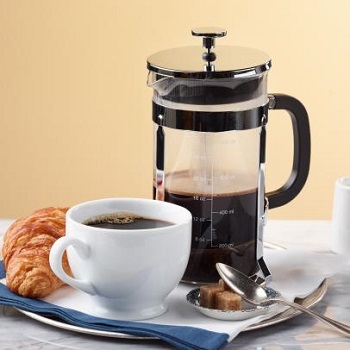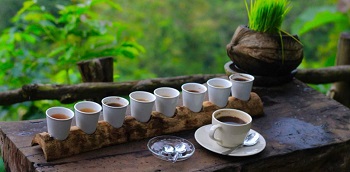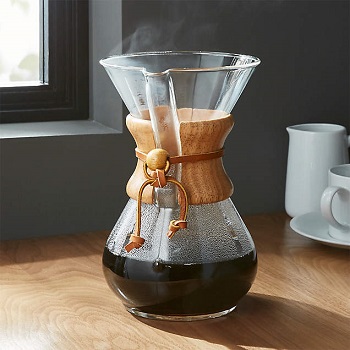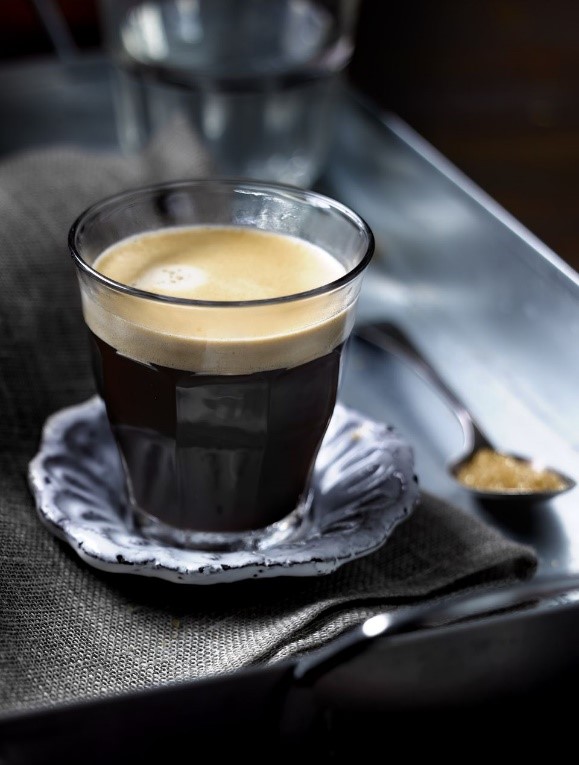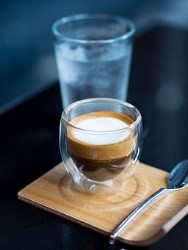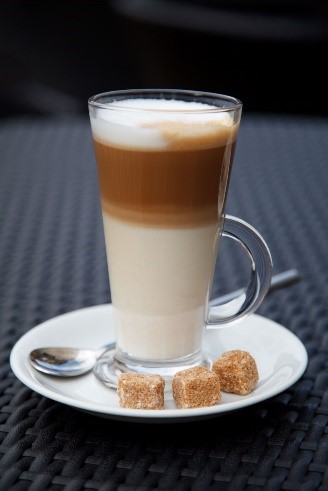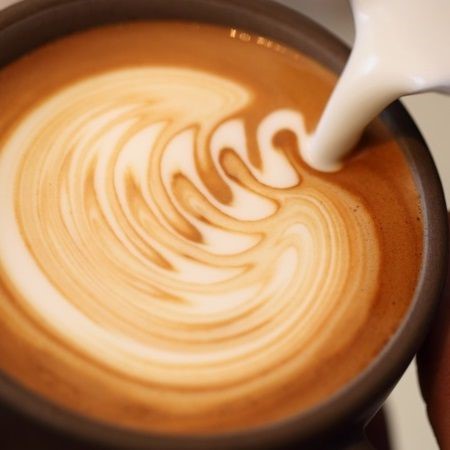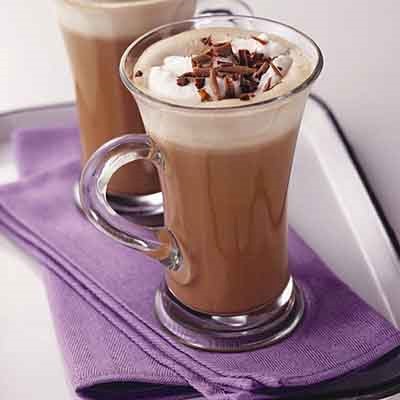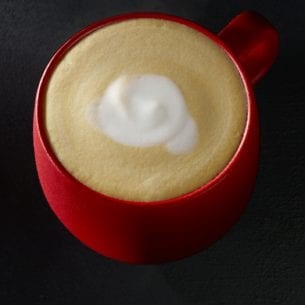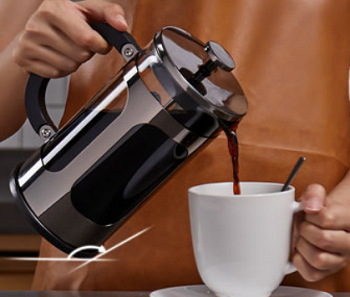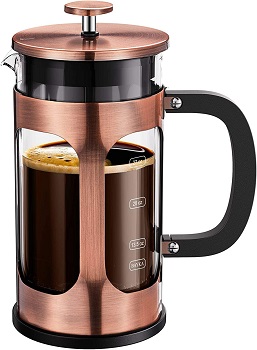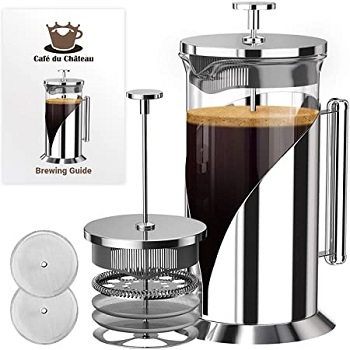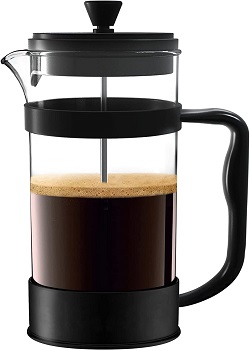If you have an espresso machine, you can use it to make some outstanding Christmas drinks without the expense of visiting your neighborhood Starbucks for their holiday drinks. Here we’ve collected some of our favorite recipes to help you produce some easy Christmas drinks of your own! Check out our holiday recipes below!
- Pumpkin Spice Latte
- Pumpkin Spice Dalgona Coffee
- Gingerbread Latte
- Mocha Cookie Crumble Frappuccino
- Holiday Peppermint Mocha
For a fun Holiday/Christmas idea, why not set up drink review test with your guests? The Holiday Drink Recipes are all relatively easy (and fun!) to make. Do your own testing with your group: for example, taste test and review Pumpkin Spice Latte vs. Pumpkin Spice Dalgona Coffee. Or do a review of sweet drinks and review and compare Mocha Cookie Crumble Frappuccino vs. Holiday Peppermint Mocha.
Pumpkin Spice Latte
The Pumpkin Spice Latte is a classic holiday drink favorite at your local big-name coffee shop. Here’s our recipe for a Pumpkin Spice Latte.
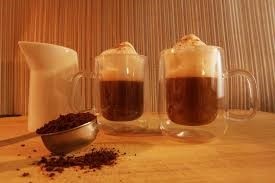
Ingredients
- 2 T sugar
- 2 c of milk (whole or low-fat to your taste)
- 2 T of canned pumpkin
- 2 T vanilla extract
- 1/2 t of pumpkin pie spice
- 1/4 -1/2 c espresso (fresh from your espresso machine).
Preparation Instructions
- Combine the first three ingredients (milk, sugar and pumpkin) in a medium saucepan and stir over medium heat until steamed
- Remove from heat, stir in vanilla and pumpkin spice
- Put the heated mixture into a blender and process about 10 seconds until foamy or whisk the mixture until foam appears
- Pour blended/whisked mixture into a mug, add your espresso and serve immediately!
Pumpkin Spice Dalgona Coffee
If you enjoy Pumpkin Spiced drinks, you will want to give Pumpkin Spice Dalgona Coffee a try.
If you are not familiar with Dalgona Coffee, it is a phenomenon of TikTok and, later, other social media platforms that is made with instant coffee or instant espresso, can be made relatively quickly without exotic equipment, and the result tastes great. The denizens of the internet rapidly discovered that the basic Dalgona coffee drink readily takes many specialty flavorings—including Pumpkin Spice!
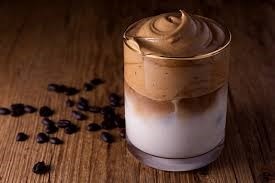
Dalgona Coffee Recipe
Ingredients
- 2 T instant coffee or instant espresso
- 2 T granulated sugar
- 2 T cold water
Preparation Instructions
- Combine coffee, sugar, and water in a medium bowl
- Using a hand mixer (or a hand whisk), vigorously mix or whisk until the mixture until it is shiny and silky smooth
- Continue mixing until the foamy mixture will hold peaks. Note that this can take 10 or more minutes if whisking by hand—a power hand mixer might be a good investment.
- Mostly fill a glass with ice and milk, then add a thick dollop or layer of the foamy mixture—traditionally done with a decorative swirl. Mix the two together if you prefer.
Preparation Instructions for Pumpkin Spice Dalgona Coffee (or Pumpkin Spice Dalgona Latte)
- To basic Coffee Dalgona, you can add virtually any flavoring
- Pumpkin Spice Coffee Dalgona: Add ¼ t pumpkin spice to the basic sugar/water/coffee mixture.
- If you wish to add pumpkin puree for more pumpkin taste, start by adding 1 T of pumpkin puree to the milk and mix before pouring over ice (adding it to the base mixture will make it difficult to get the proper frothing).
Dalgona Coffee is great with many added flavors. For example, you can add:
- Chai Spices
- Cocoa powder (for a Mocha flavor)
- Vanilla
- Matcha tea powder
- Crushed freeze dried fruit (like strawberries. Yum!)
Gingerbread Latte
This is a “classic” recipe for Gingerbread Latte. This spiced latte taste delicious and will warm you up in the cooler weather of the holiday season.
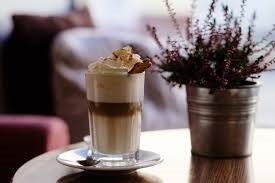
Ingredients
- 2 c of water
- 1 1/2 c of sugar
- 2 1/2 t of ground ginger
- 1/2 t of ground cinnamon
- 1/2 t of vanilla extract
- 1/2 c of your fresh, delicious espresso
- 8 ounces of milk, steamed with a little foam (whole milk preferred, or lower fat milk, to your taste)
- Whipped cream and ground nutmeg to your taste
Preparation Instructions
- Prepare gingerbread syrup by combining water, sugar, ginger, cinnamon and vanilla in a saucepan large enough to prevent boil-over of the mixture
- Bring mixture to a boil and then simmer the syrup, uncovered, for 15 minutes. Remove the syrup from the heat and cover it with a lid
- Make 1/2 cup (a double shot) of espresso with your espresso machine. Prepare 8 ounces of hot milk with your steamer (or a microwave). This is where a nice cappuccino machine can make your day easier and your drink tastier.
- Finish your latte by placing the double shot of espresso in a 16-ounce cup. Then add 1/4 cup of gingerbread syrup, and top with the steamed milk. Stir.
- Finish off your gingerbread latte with a dollop of whipped cream and a sprinkle of nutmeg. Enjoy immediately!
Mocha Cookie Crumble Frappuccino
This Mocha Cookie Crumble Frappuccino provides that sweet Holiday drink taste you crave during the Christmas season. It is the perfect drink when you crave a drink that is both cold and sweet.
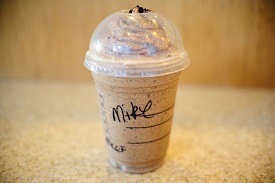
Ingredients
- 1 c espresso or strong coffee
- ¼ c plus 2 Tbs of your favorite flavored creamer
- 1 T chocolate syrup
- ½ t brown sugar
- ½ t white sugar
- 3 T chopped mini chocolate chips
- 2 T cookie crumbs or 3 crushed Oreos
- 1-1½ c crushed ice
- Chocolate whipped cream
- Cookie crumbs for garnish
Preparation Instructions
- Mix coffee, creamer, and chocolate syrup together (cool if you start with hot coffee)
- Put coffee mixture in a blender
- Add chocolate chips, crushed Oreos, and ice
- Blend on high until mixture is smooth
- Top with whipped cream and cookie crumbs
- Serve immediately!
Holiday Peppermint Mocha
A long-time favorite in coffee shops, this Peppermint Mocha recipe is a drink you can make and enjoy at home (for a fraction of the price).
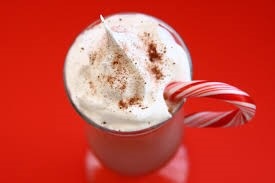
Ingredients
- 1/4 c of sugar
- 1/4 c of water
- 3 t peppermint extract
- 3 t powered cocoa
- 3 t warm water
- 1/2 c hot espresso
- 1.5 c steamed milk
Preparation Instructions
- Stir water and sugar in a pot and bring to a boil
- Reduce heat to a low simmer and add 1.5 t peppermint extract.
- Allow mixture to simmer for 20 minutes
- Mix cocoa and water in a cup or small bowl to a past consistency
- Add espresso and 1.5 t peppermint extract.
- Add steamed milk and serve immediately
It’s Easy to Enjoy Your Favorite Christmas Drinks
Kick back and relax with family and friends for the holidays and enjoy some of your new favorite espresso drinks!
You will find that a super automatic espresso machine especially one with a double boiler and steam wand can make these drinks easy to prepare. Here are three great espresso machines to check out:
- Gaggia RI9700/64 Babila Espresso Machine (View on Amazon.com) is a fully automatic bean-to-cup machine. It has a manual steam wand which can also dispense hot water. The Babila features automatic milk frothing for cappuccinos and includes a milk carafe.
- Breville BES870XL Barista Express Espresso Machine (View on Amazon.com). While this is a single boiler machine (meaning you cannot brew and steam at the same time), it is a popular and reliable machine with excellent milk frothing capabilities. If you want to step up to true dual boiler capability, we recommend the Breville BES920XL Dual Boiler Espresso Machine (View on Amazon.com).
- DeLonghi ECAM23450SL Superautomatic Espresso Machine (View on Amazon.com). This DeLonghi machine has all the features of full-size machines despite its compact size. It’s designed to easily prepare both lattes and cappuccinos with its front mounted milk tank. It’s designed for easy maintenance and has a built in water filter to allow the use of tap water.
